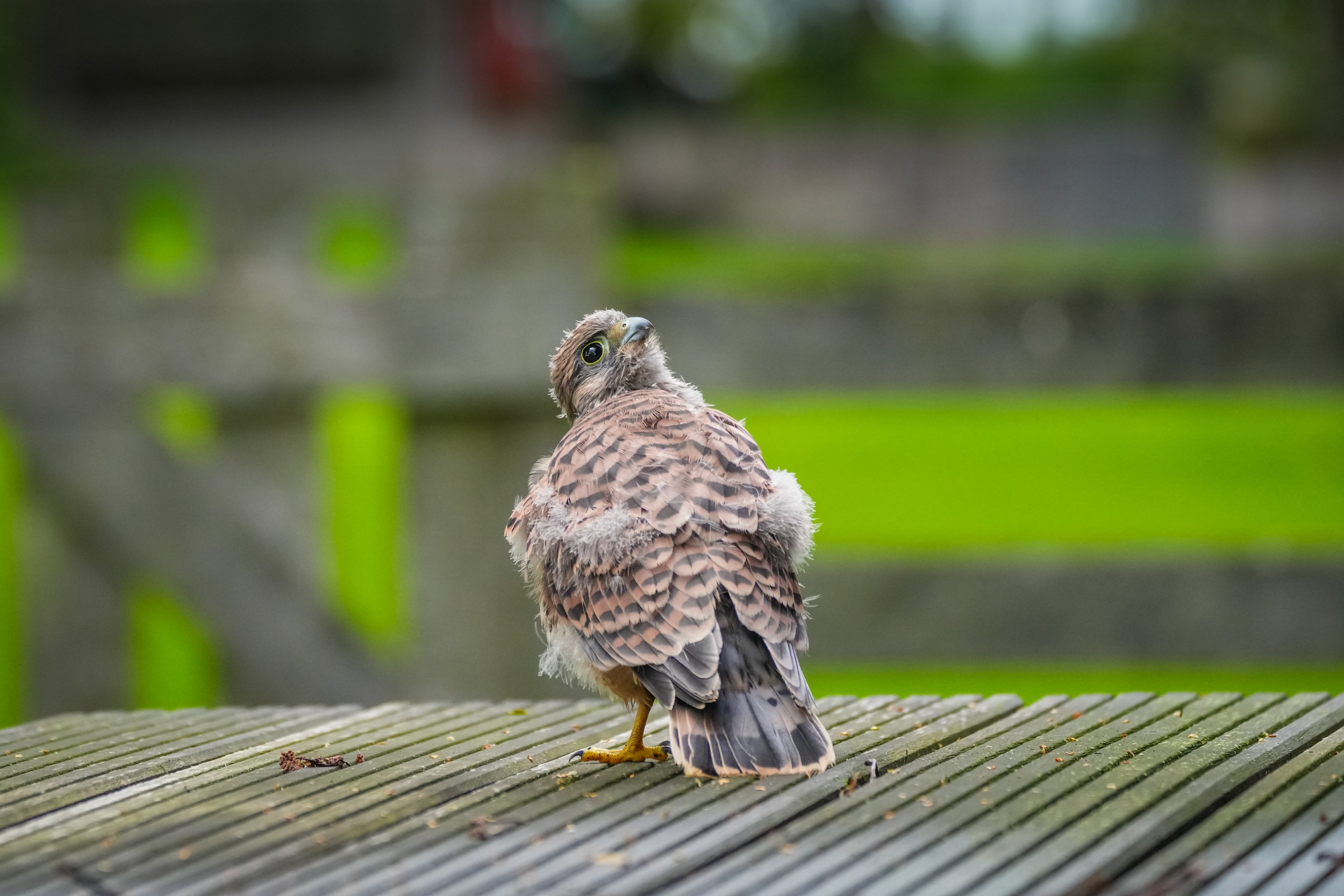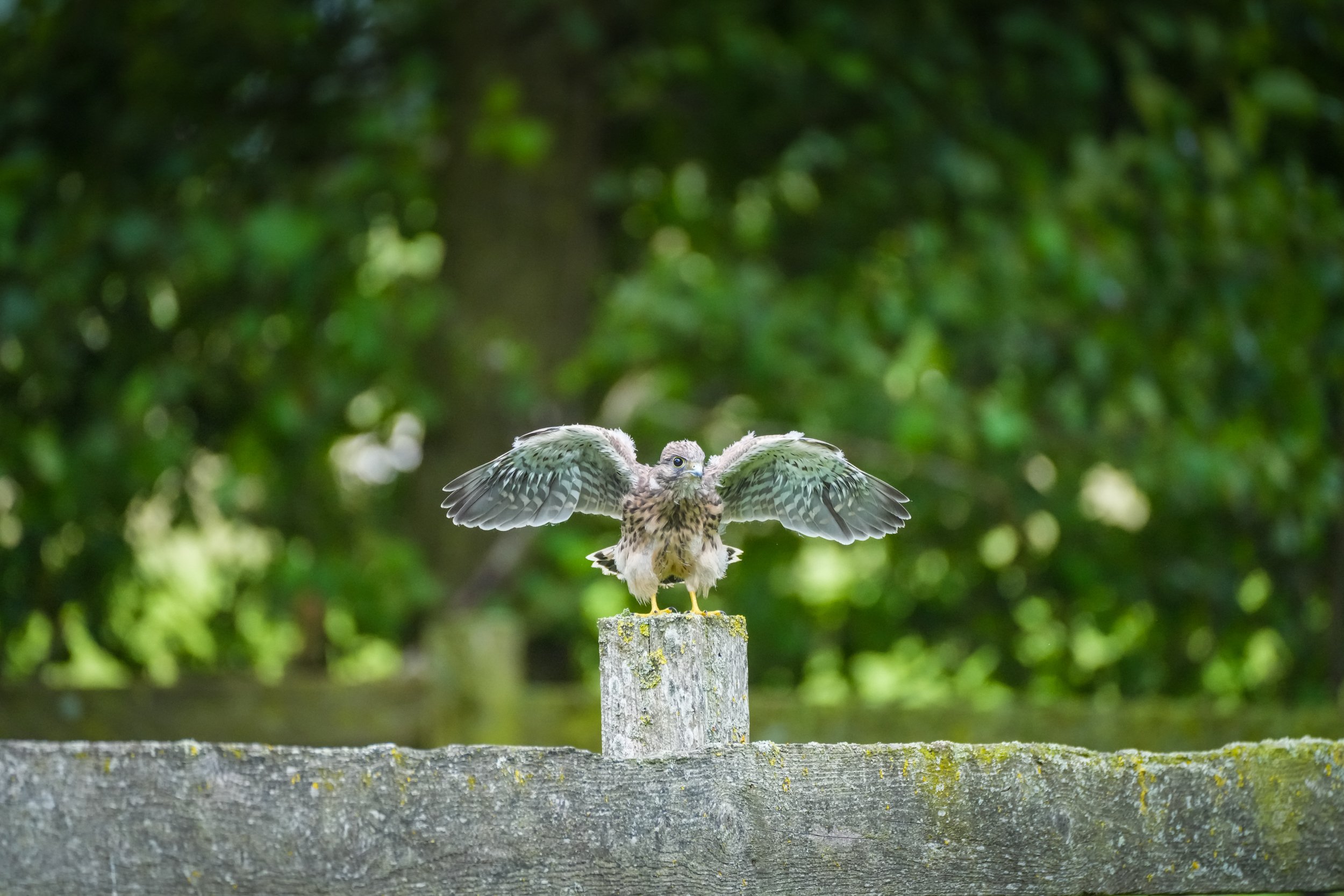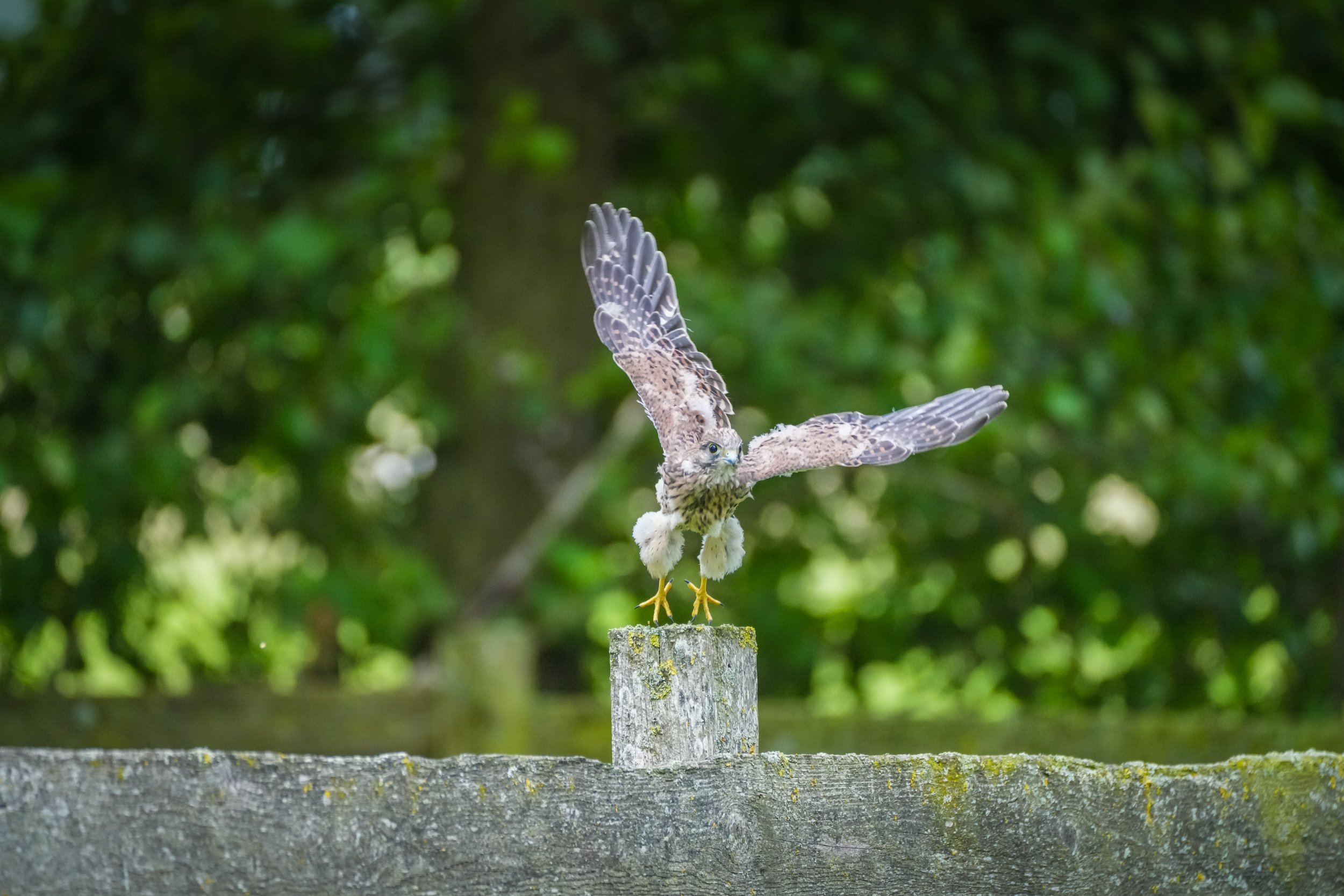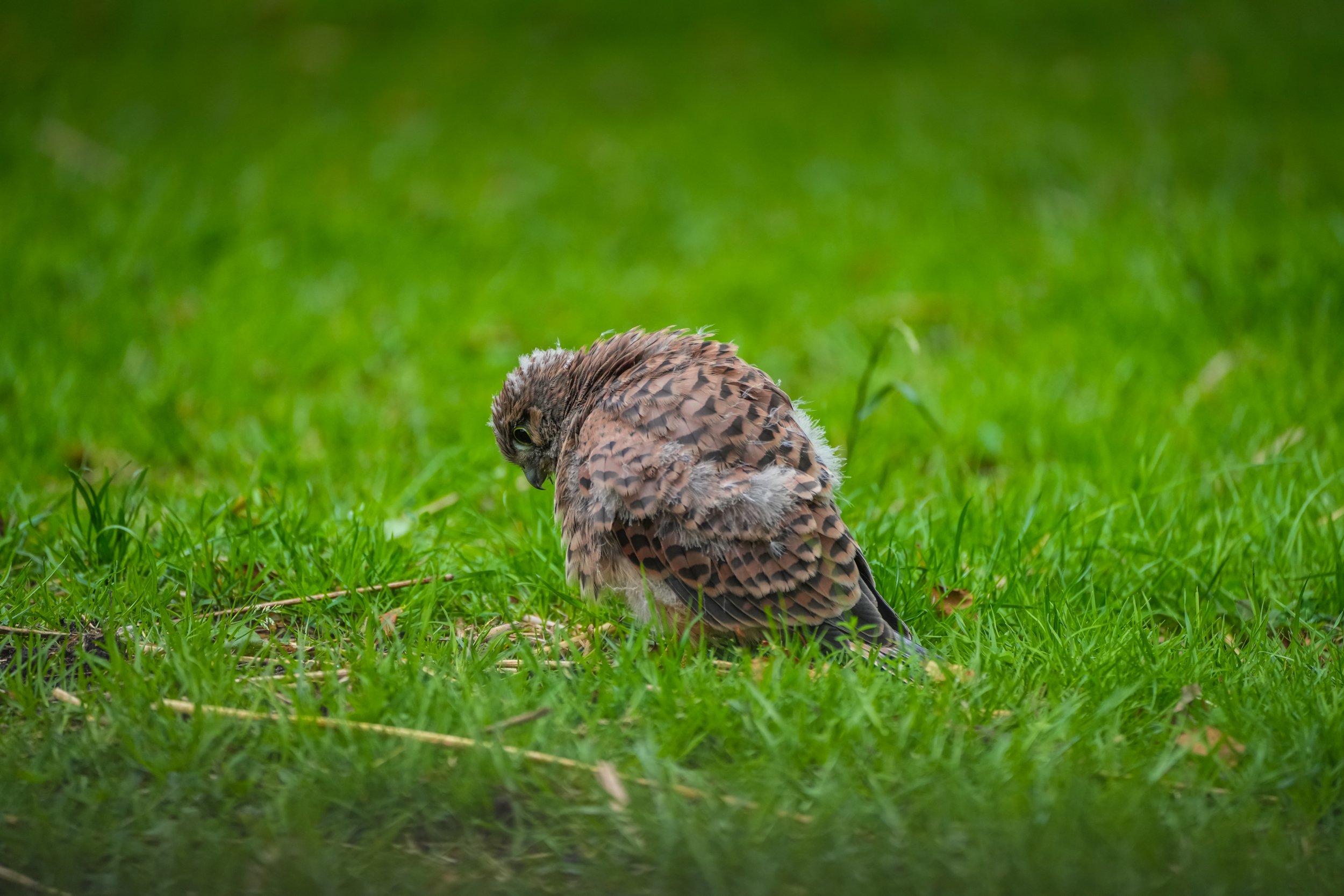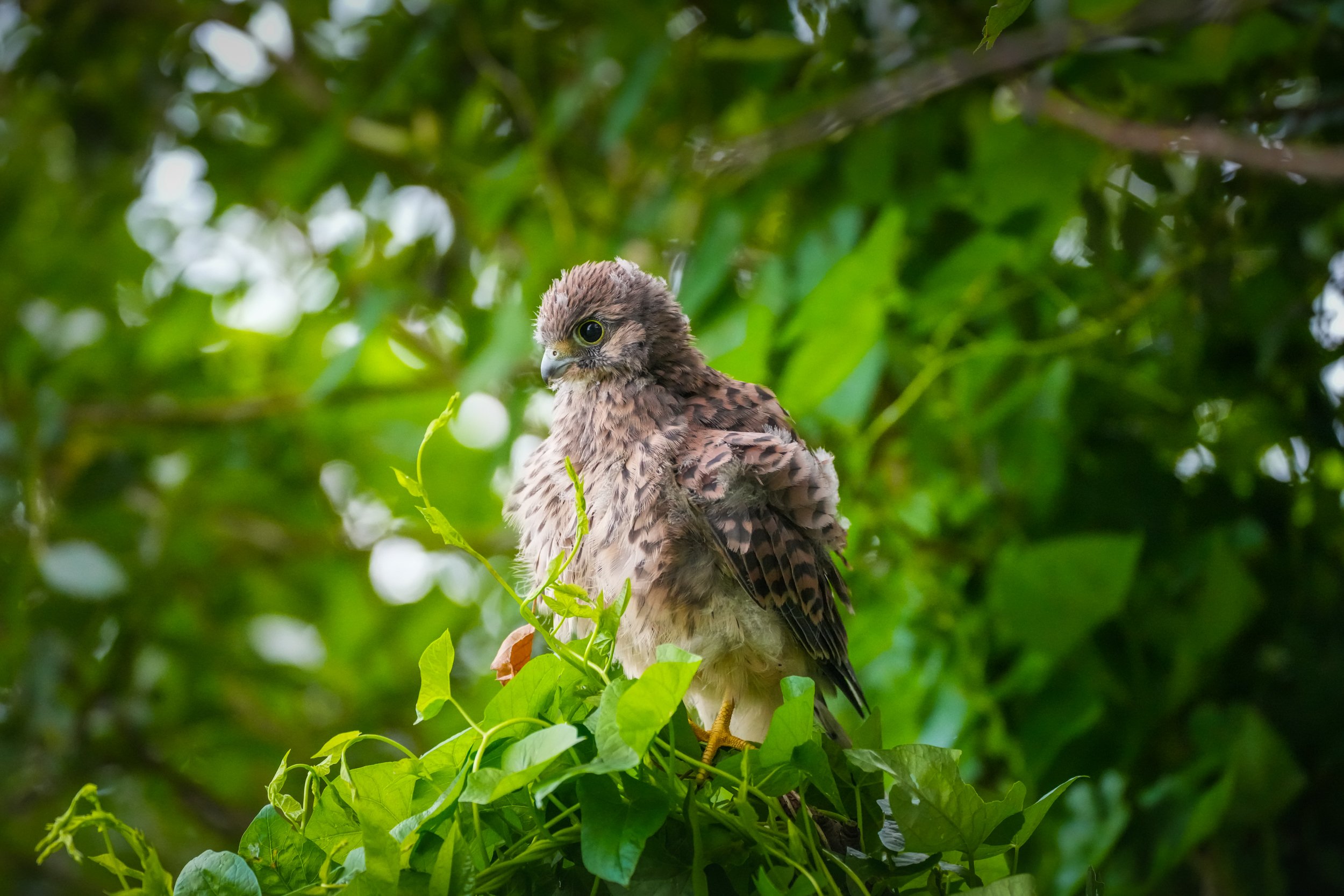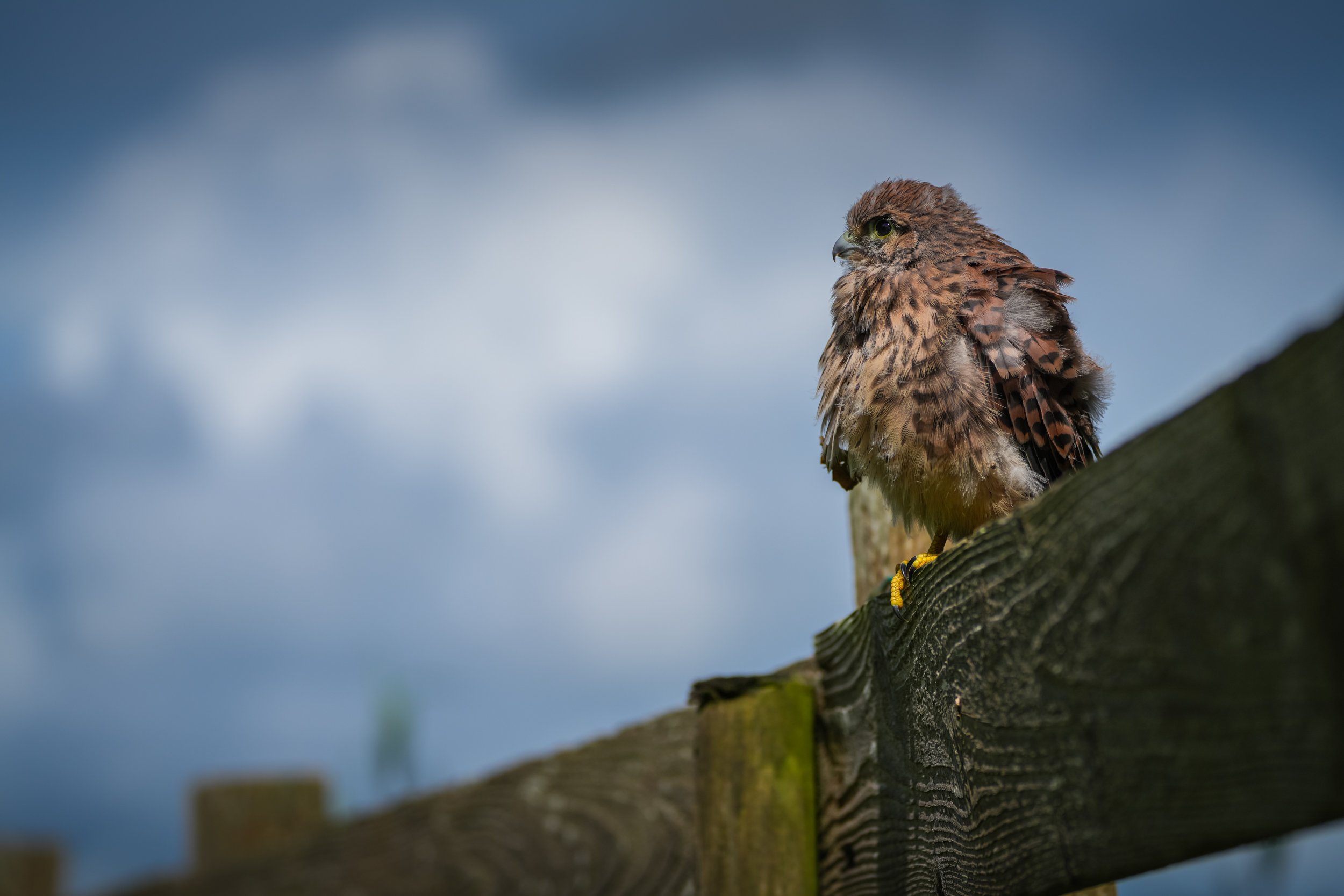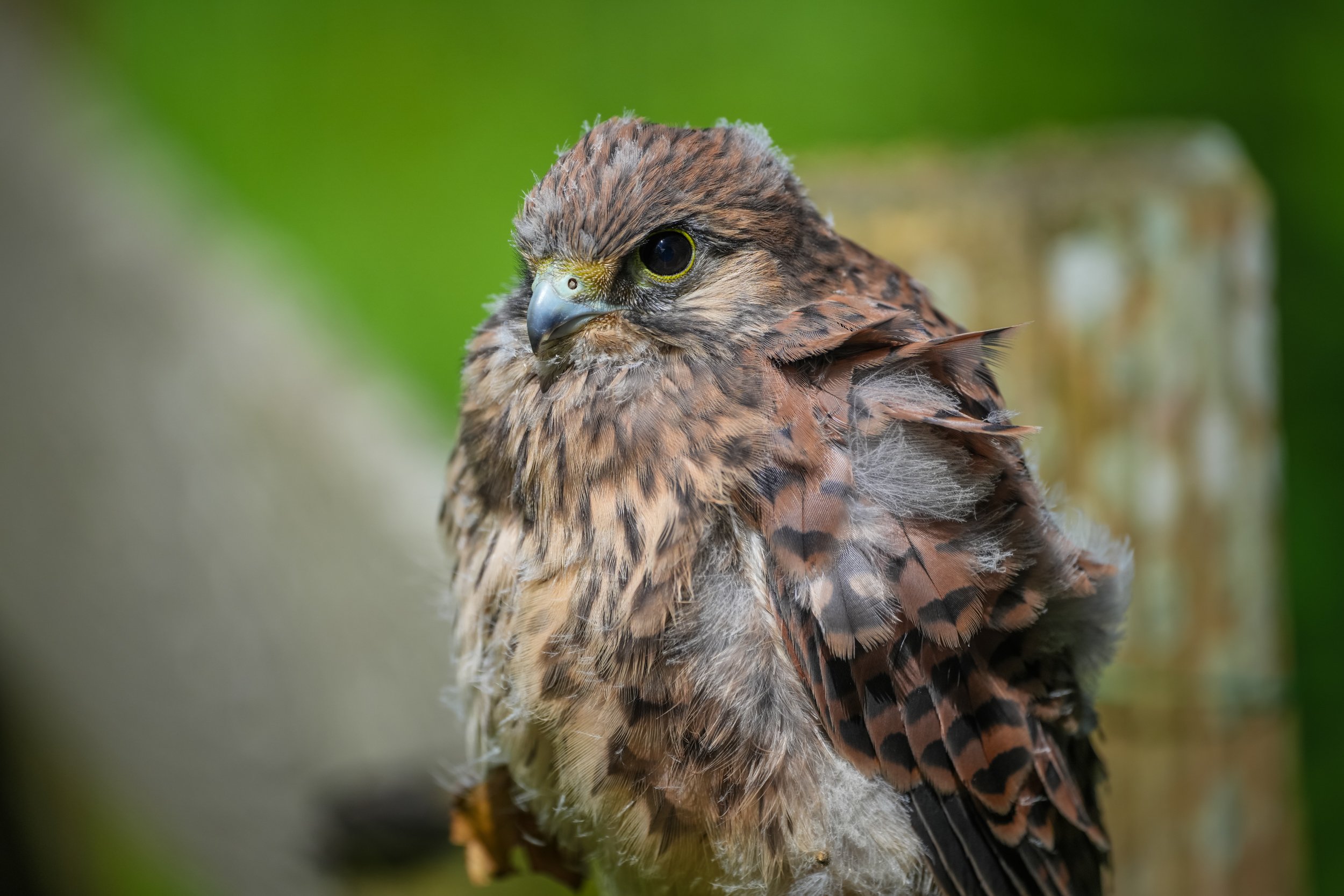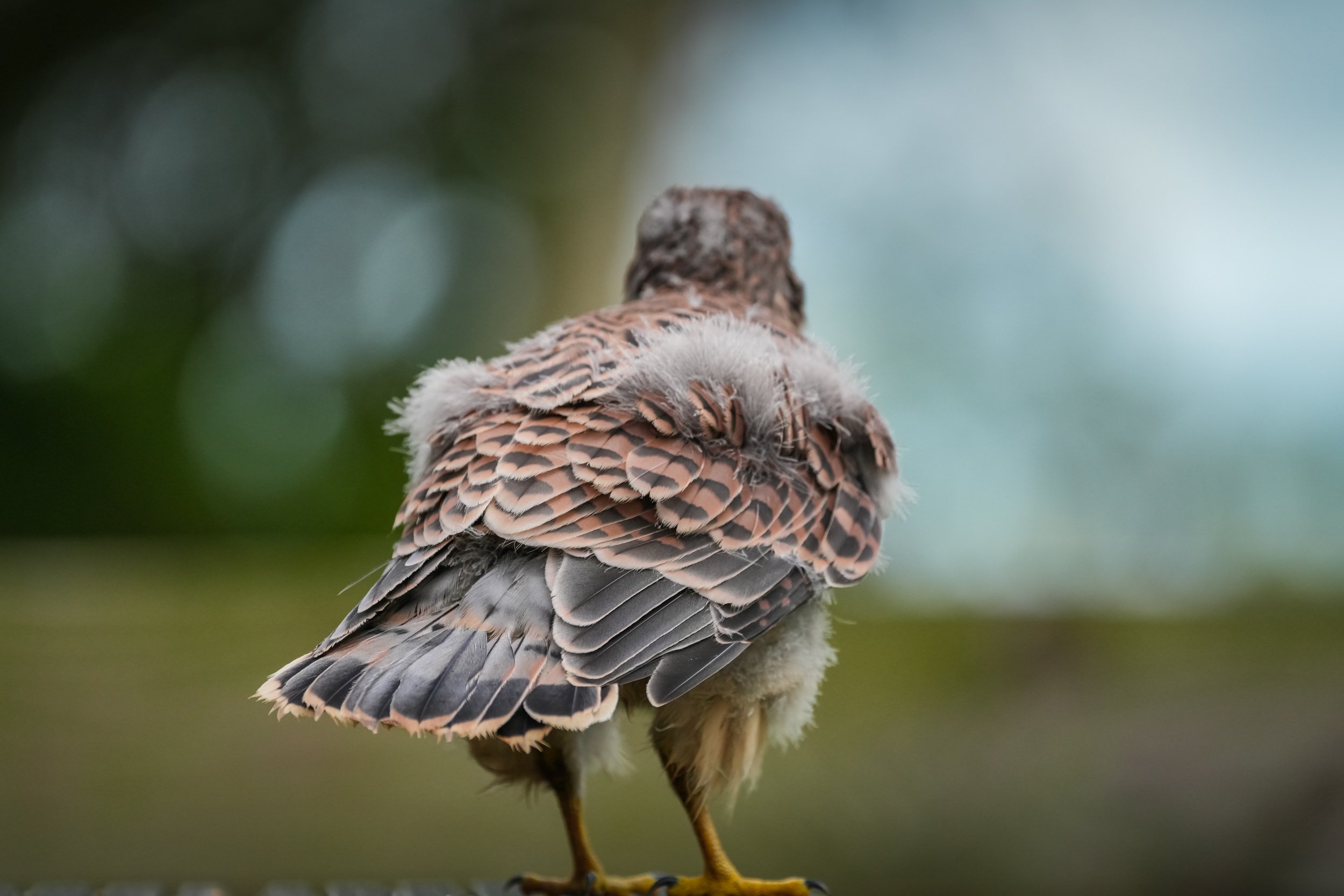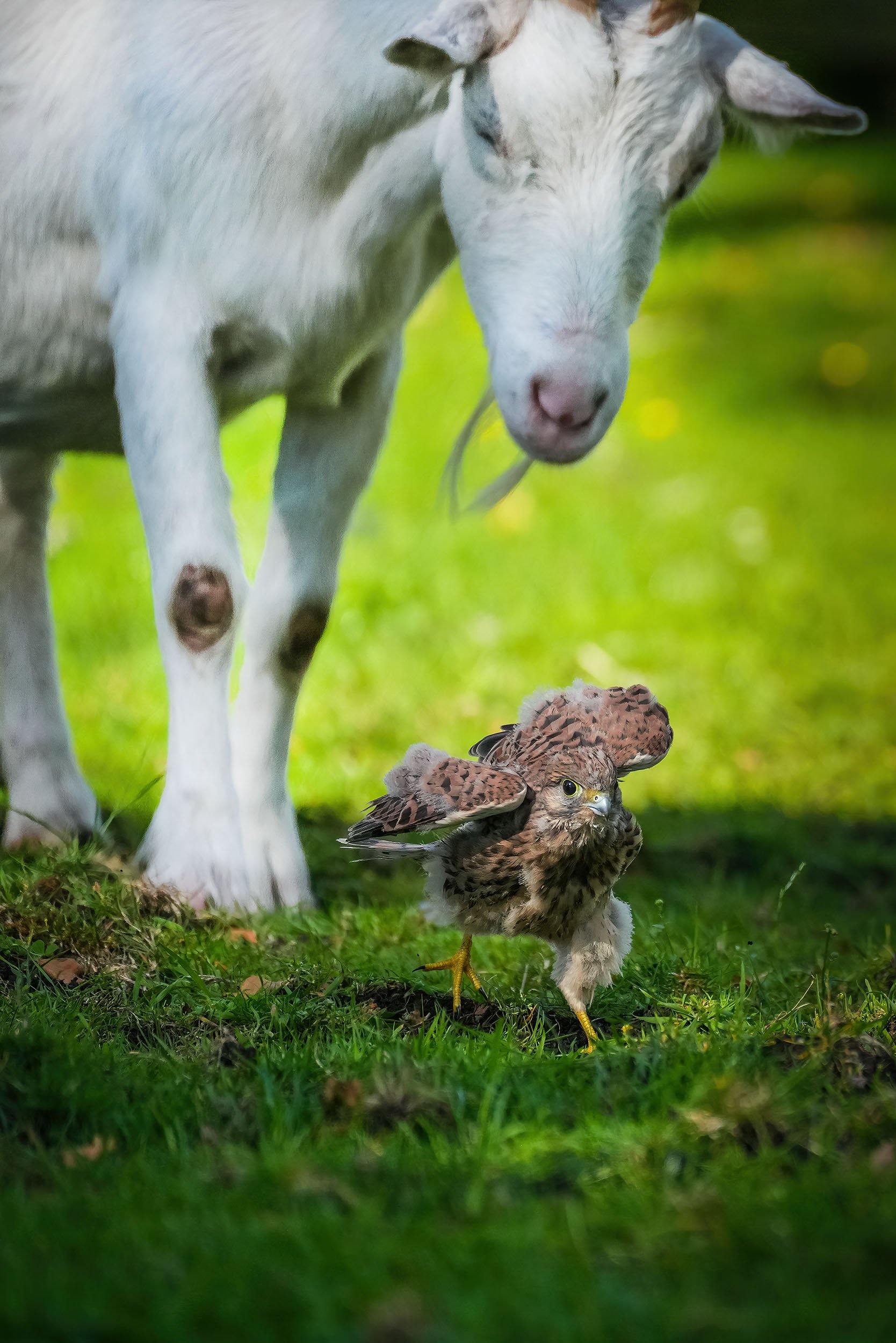From blind hatchling to majestic hunter
Clumsy movements on fence posts
I was very lucky to be around with my camera when the young kestrels left the nest. I spent an entire afternoon hiding under the goat hutch on legs, enjoying the first independent flights, their languorous gaze upwards in search of the parents, clumsy movements on fence posts and in trees.
Kestrels are fascinating birds of prey that belong to the falcon family. These small raptors are known for their agility in flight and their ability to hover over open fields in search of prey. While adult kestrels are majestic hunters, it is equally intriguing to explore the growth and development of young kestrels as they transition from hatchlings to skilled hunters.
Courtship rituals
The life cycle of a kestrel begins with the courtship rituals of the adult birds. These rituals involve impressive aerial displays and vocalizations, which help establish strong pair bonds. Once the pair has bonded, they select a suitable nesting site. Kestrels often choose cavities in trees, cliffs, or even man-made structures such as buildings or nest boxes. The female kestrel lays a clutch of eggs, typically ranging from three to seven, and both parents take turns incubating them.
Born blind
After an incubation period of around 28 to 30 days, the kestrel eggs hatch. The young kestrels, known as hatchlings or nestlings, are born blind and completely dependent on their parents for survival. The parents diligently provide warmth, protection, and food to the hatchlings. In the early weeks, the hatchlings rely solely on regurgitated food provided by their parents. As they grow, their downy feathers start to give way to a more mature plumage, and their eyes gradually open, revealing their keen gaze.
Languorous gaze upwards in search of the parents
Growing appetites
During the nesting phase, the parents play a crucial role in the survival and development of the young kestrels. Both the male and female take turns guarding the nest, ensuring its safety from predators and other potential threats. The parents also provide nourishment by hunting for small mammals, birds, and insects, which they bring back to the nest to feed their hungry offspring. As the nestlings grow, their feeding requirements increase, and the parents are kept busy satisfying their growing appetites.
As young kestrels continue to mature, they develop a more diversified diet. While their parents initially provide them with easy-to-digest prey, such as insects and small rodents, the young kestrels gradually learn to hunt for themselves. They start by practicing their hunting skills on insects and progress to capturing small birds and mammals. This transition is a critical stage in their development, as it enables them to acquire the necessary skills for survival in the wild
Sleek and powerful hunters
During their growth phase, young kestrels experience several significant milestones. Their physical changes are particularly noteworthy, as they transform from fluffy hatchlings to sleek and powerful hunters. Their feathers become more vibrant and defined, allowing them to blend into their surroundings for better camouflage. Additionally, their wingspan increases, granting them greater agility and improved flight capabilities. These physical changes go hand in hand with their behavioral development, as they become more confident and independent.
Sleek and powerful hunters
Becoming a hunter
As young kestrels continue to mature, they undergo significant behavioral development. They learn by observing their parents' hunting techniques and by practicing their own skills. The parents play a crucial role in teaching the young kestrels how to catch prey efficiently. They demonstrate techniques such as hovering, stooping, and diving, which are essential for successful hunting. Through trial and error, the young kestrels gradually refine their hunting abilities, honing their agility and accuracy in capturing their prey.
While kestrels are remarkable hunters, young kestrels face numerous challenges and threats during their development. Loss of suitable nesting sites due to habitat destruction poses a significant risk. Additionally, exposure to pesticides and other pollutants can have adverse effects on their health. Competition for resources, such as nesting sites and prey, from other bird species further complicates their survival.
Continuation of their species
The kestrel is not doing well in the Netherlands, which is why the species ended up on the Red List of Dutch breeding birds in 2017. The decline in recent decades is attributed to the intensification of agricultural use of grasslands, which generally means that there are far fewer field mice [Vogelbescherming].
From their humble beginnings as blind and helpless hatchlings, they undergo remarkable transformations that shape them into skilled hunters. As they navigate the challenges and threats in their environment, it is our responsibility to support their conservation and ensure the continuation of their species.
Click on image for larger view
all images © Mirjam Letsch | all rights reserved





